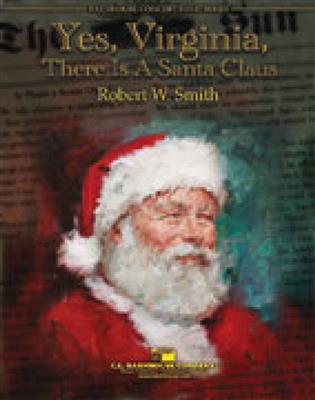Results
-
 £60.50
£60.50The Recession Depression Holiday Blues - Robert W. Smith
In these challenging economic times, what better way to show creativity and compliance than this hilarious setting of the traditional Jingle Bells? The opening announcement reminds the audience that our budgets have been cut and the band has been forced to reduce the amount of new instrument purchases. As a result, the band went to the toy shop and bought several new instruments including the kazoo, toy drum, toy xylophone, and trash can lid cymbals among others. Following the "tuning" of the toys, the swing setting kicks off and features the toys in melody, improvisation and response quotes throughout. "Now that's what I call using our resources!"
Estimated dispatch 7-14 working days
-
£64.99
Firecracker - Sciaino
Drawing inspiration from the Lunar New Year Firecracker Ceremony in New York City's Chinatown, "Firecracker" is an exhilarating celebration at a sizzling tempo that's sure to please. Images of crackling explosives, dazzling colors, and joyful dance fuel this annual event that honors Chinese culture. A contagious drumbeat played on traditional drums by musicians traveling from business to business wishes good fortune and prosperity in the coming year. This is emulated in this selection with flexible numbers of percussionists who can call all join in on the fun. Meanwhile, wind players will love the opportunity to nimbly play soaring melodic lines over the invigorating rhythmic figures found throughout. You'll love "Firecracker" and its vigorous, jubilant spirit! Unique!
Estimated dispatch 7-14 working days
-
 £74.99
£74.99Invercargill - Alex Lithgow
Named for the town of Invercargill, New Zealand, this exceptionally strong march has been a favorite of bands around the world for many decades. Andrew Glover's new edition retains the tuneful spirit of the original and is not simplified in any way while providing bands with a superior version containing added parts for the modern concert band. A CLASSIC MARCH!
Estimated dispatch 7-14 working days
-
 £83.50
£83.50When The Tears Fell - Ed Huckeby
"When the Tears Fell" is a descriptive programmatic composition based on the 1838-1839 "Trail of Tears" historical trek of the Cherokee Indians from the Eastern United states to their new home in the Indian Territory (now Oklahoma). Written in four sections, "The Gathering", "The Journey", The Harsh Winter" and "Spring: A New Nation", it will challenge your band musically and is a tremendous choice for concert or festival performances.
Estimated dispatch 7-14 working days
-
 £78.99
£78.99Yes, Virginia, There Is A Santa Claus - Robert W. Smith
It's 1897 in New York City. A young girl writes to the editor of the New York Sun questioning the existence of Santa Claus. The classic editorial response "Yes, Virginia" has charmed generations of families during the yuletide season. Robert W. Smith has set this inspiring text to music for performance at any holiday concert. Featuring a narrator, the band setting includes holiday favorites that bring these famous words to life. Why not ask your principal or superintendent to perform with the band this year? Suitable for performance by ensembles at many levels, "Yes, Virginia" reminds us all of the wonders of the holiday season as seen through a child's eyes!
Estimated dispatch 7-14 working days
-
£65.99
On Jersey Shore - Arthur Pryor
Written for his band's frequent performances at the popular New Jersey summer resort area of Asbury Park, New Jersey, this rock-solid Arthur Pryor march is tops!
Estimated dispatch 7-14 working days
-
£98.99
How Sweet The Sound
Cast as a pseudo-Chaconne, this set of variations on the popular tune "Amazing Grace" offers something new for your band. This new work features a prominent piano solo and accessible parts for each instrument. Also available for orchestra.
Estimated dispatch 7-14 working days
-
 £73.50
£73.50When Saint Nick Comes Marching In
New Orleans and its unique music history has impacted the entire world through the roots of jazz and popular music. Beginning with a trumpet solo inspired by Louis Armstrong, the piece quickly transitions to a Dixieland Jazz quintet. The full band, in the tradition of the New Orleans Brass Bands, joins the street parade with Saint Nick leading the celebration shouting "Heaux, Heaux, Heaux!" Staging and performance options abound. This will be the hit of your holiday concert!
Estimated dispatch 7-14 working days
-
£95.50
Atlantic Fanfare - Christopher Kyle Green
This piece was written to honor the noble and historic American Atlantic seaboard. Christopher Kyle Green has created a fresh and new fanfare statement like the land the European settlers sought for a new beginning. Perfect for the advanced program longing to showcase their proficiency.
Estimated dispatch 7-14 working days
-
£53.95
Elfie Stick
Santa has just received a new phone for the holidays! The elves are fascinated with the new technology and are having a great time taking "elfies" as they prepare for Santa's big trip. This fun arrangement of holiday favorites provides a great opportunity for interactive performance with your audience. Your favorite holiday character can join the band with ample opportunity to engage and photo your musicians and audience throughout. The performance concludes with a large audience selfie using our "Elfie Stick" kicking off the holiday season with smiles and sharable media. Your students and audience will treasure that final photo! Enjoy!
Estimated dispatch 7-14 working days
